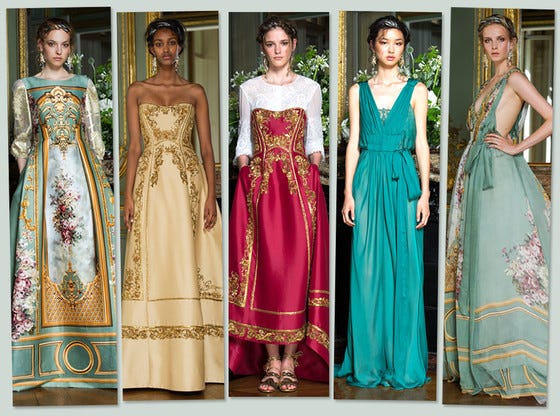
Cultural influences on fashion

Indroduction Cultural influences on fashion
“Cultural influences on fashion” explains how the evolution, transformation, and creation of trends in the fashion industry are greatly influenced by various cultures across the globe. Fashion is more than just clothes; it is a mode of expression with deep connections to social, historical, and cultural contexts. The ways that cultural influences manifest themselves in the fashion industry are summed up as follows:
1. Traditional Clothing and Textiles:
The reflection and preservation of cultural influences are greatly aided by traditional apparel and textiles. Historical, social, economic, and environmental factors all have an impact on them. Traditional textiles and apparel are found in many cultures throughout the world, and they serve practical as well as profound symbolic purposes.
Cultural Personality:
- A community’s or region’s traditional textiles and apparel are frequently strongly ingrained in its cultural identity. They are a reflection of the distinct history, traditions, and ideals of a specific people group.
- Traditional textiles’ distinctive patterns, hues, and designs frequently tell particular tales and have particular meanings; they act as a visual language that highlights a community’s diversity of cultural expression.
Historical Importance:
- The history of traditional textiles and apparel can span several centuries. They can shed light on a society’s historical evolution, trade connections, and creative and technological breakthroughs.
- Cultural influences on fashion Textiles have been essential to trade and cross-cultural exchanges some fabrics have even gone on to become highly prized commodities that have facilitated the flow of goods and ideas around the world.
Expression of Art:
- Customary textiles frequently feature elaborate patterns and designs that highlight a community’s artistic abilities and inventiveness. These textiles could be made using a variety of methods, including printing, dyeing, weaving, and embroidery.
- The artistic components of traditional textiles and apparel enhance the aesthetic appeal of cultural artifacts and are occasionally valued as important types of folk art.
Ceremonies and Rituals:
- Often, traditional attire is worn for significant ceremonies, rituals, and celebrations. These clothes have symbolic meanings and can represent social milestones, religious occasions, or various life stages.
- Rich spiritual and cultural meanings are associated with textiles used in religious ceremonies, rites of passage, or traditional festivals. These uses strengthen ties within the community and help people feel more connected to their heritage.
- The use of natural materials and sustainable practices are integral to many traditional textile-making processes. In the production of traditional textiles, local resources like plant fibers, animal hides, and organic dyes are frequently used.
- Traditional textile and apparel production techniques are examples of environmentally friendly practices that reduce their negative effects on the environment, particularly as sustainability becomes a global concern.
2. Globalization and Cross-Cultures Fusion:
Globalization and the blending of cultures have had a profound effect on societies all over the world, resulting in the sharing and blending of customs, values, and ideas. To illustrate the consequences of globalization and cross-cultural fusion, consider the following five points:
- Cultural Blending: The interchange of cultural elements between diverse societies has been made easier by globalization. As a result of this process, hybrid cultures are frequently created, in which aspects of one culture are combined with traditional practices and customs. There are many ways to see this blending of cultures, such as in language, food, style, and artwork.
- Diversity of Cultures: Globalization promotes greater awareness and appreciation of cultural diversity, even though it can also result in some aspects of culture becoming more homogenized. People now live in a more interconnected world where they celebrate and share their distinct cultural identities as a result of exposure to various customs and traditions through international media, travel, and communication technologies.
- International Pop Culture: A common, cross-national popular culture has emerged as a result of globalization. Pop culture components, including fashion, music, film, and social media trends, are widely shared worldwide and have the power to shape the tastes and preferences of individuals from various cultural backgrounds.
- Collaboration and Cultural Exchange: Collaboration and exchange between artists, designers, and creators from different backgrounds are encouraged by cross-cultural fusion. As a result, fresh and inventive forms of literature, music, art, and other cultural expressions have emerged, drawing inspiration from a wide range of sources.
- Obstacles to Conventional Identity: Traditional Cultural influences on Fashion identities may face challenges as the world becomes more interconnected. With the increasing prevalence of global influences, certain communities might be at risk of losing some of their cultural heritage. For many societies, finding a balance between upholding traditional values and embracing global influences becomes essential.
3. Celebration of Diversity:
The celebration of diversity is a recognition and appreciation of the rich variety of human differences, including but not limited to culture, ethnicity, gender, age, religion, socioeconomic status, and abilities. Embracing diversity is essential for fostering a more inclusive and tolerant society. Here are key aspects of the celebration of diversity.
- Cultural Exchange and Understanding: Promoting cultural exchange and mutual understanding between various communities is a key component of celebrating diversity. This can be accomplished by holding celebrations, festivals, and activities that showcase the distinctive customs, traditions, and values of different ethnic groups. Through encouraging cross-cultural exchanges, individuals can develop a greater understanding of the benefits that diversity offers to society.
- Cultures in Events and Festivals: Including people from all backgrounds and cultures in events and festivals fosters a sense of community. People can share their heritage, artwork, music, dance, and cuisine on these platforms. Participants can discover and celebrate the unique qualities that distinguish each community.
- Educational Initiatives: Through educational initiatives, community organizations, colleges, and schools can all play a significant part in promoting diversity.Stereotypes can be lessened and understanding can be increased by incorporating various points of view into curriculum, hosting seminars, and promoting multicultural literature. Cultural influences on fashion Fostering tolerance and an appreciation for differences can be effectively achieved through education.
- Promoting Equal Opportunities: Diversity celebrations should go beyond token acts and actively seek to guarantee that everyone, regardless of background, has equal access to opportunities. Promoting diversity in the workplace, government, and other establishments contributes to the development of a more equal and representative society. This may result in a variety of opinions being heard during the decision-making process.
- Community Involvement: Celebrating diversity requires involving communities in discussions and cooperative projects. Mutual respect is fostered by providing forums for candid discussions about cultural differences, obstacles minority groups face, and strategies for advancing inclusivity.
4. Cultural Symbols and Motifs
Cultural symbols and motifs are tangible, audible, or visual representations that have deep cultural significance. These symbols serve to communicate common values, beliefs, and traditions and frequently have social, religious, or historical significance. The following are some salient features of cultural symbols and motifs:
- Identity and Heritage: A community’s identity and heritage are powerfully represented through cultural symbols and motifs. They frequently have historical significance and serve as a reflection of the customs, values, and shared experiences of a given culture. These icons give people a sense of identity and a way to stay connected to their heritage.
- Communication and Expression: Within a culture, symbols and motifs are essential for communication and expression. These symbols can transmit intricate concepts, tales, or feelings through rituals, art, or clothing. Members of a cultural group can use them as a common language to express who they are and what they mean.
- Preservation of Traditions: Cultural motifs and symbols serve as messengers for customs, assisting in the transmission of cultural behaviors from one generation to the next. Cultural influences in Communities preserve and commemorate their distinct customs and rituals over time by integrating these symbols into a variety of daily activities.
- Unity and Solidarity: Cultural influences on fashion symbols frequently help people in a community feel united and supportive of one another. People connect with one another when they recognize common symbols, which fortifies social ties and fosters a feeling of group purpose. A cohesive and encouraging community may result from this unity.
- Cross-Cultural Understanding: Cultural motifs and symbols can aid in the understanding of other cultures. People from various backgrounds get insights into the diversity of human experience when they come into contact with and learn about each other’s symbols. As a result, a more cohesive global society may be fostered through encouraging tolerance, respect, and appreciation for cultural diversity.
- Individual Expression: Through clothes, accessories, and personal style preferences, people can use street style within a variety of subcultures to express their distinct identities and creative tendencies. It acts as a vehicle for self-expression that frequently deviates from accepted fashion standards while exhibiting uniqueness and authenticity.
- Subcultural Identity: Subcultures are groups that set themselves apart from the mainstream through shared values, interests, and aesthetics. Street style is closely associated with these groups. These subcultures’ fashion choices serve as visual markers of identity, indicating membership in a specific group and the values or way of life that go along with it.
- Resistance And Rebellion: Street style can be interpreted as a type of rebellion or resistance against the expectations and norms of society. Subcultures frequently arise in opposition to dominant cultural ideals, and their unusual fashion choices subvert expectations and convey a desire to reject norms and express different viewpoints.
- Influence on Mainstream Fashion: Subculture street style has a big influence on trends in mainstream fashion. Broader fashion trends can be influenced and reshaped by a subculture’s distinctive and unconventional style. Street style components, like particular articles of apparel or accessories, can be embraced and modified by mainstream designers and customers.
- Building Community: Within subcultures, street style helps to create a feeling of community. Within a subculture, shared fashion aesthetics establish a visual language that facilitates recognition and interpersonal connections. Subcultural communities are more cohesive because of the shared symbols, articles of clothing, and fashion choices that strengthen this sense of belonging.
In conclusion, street style within subcultures is a dynamic and powerful force that transcends simple choices in clothing. It acts as a forum for personal expression, a symbol of subcultural identity, a means of resistance, an influencer of popular fashion trends, and a way to foster a sense of community among like-minded people .
